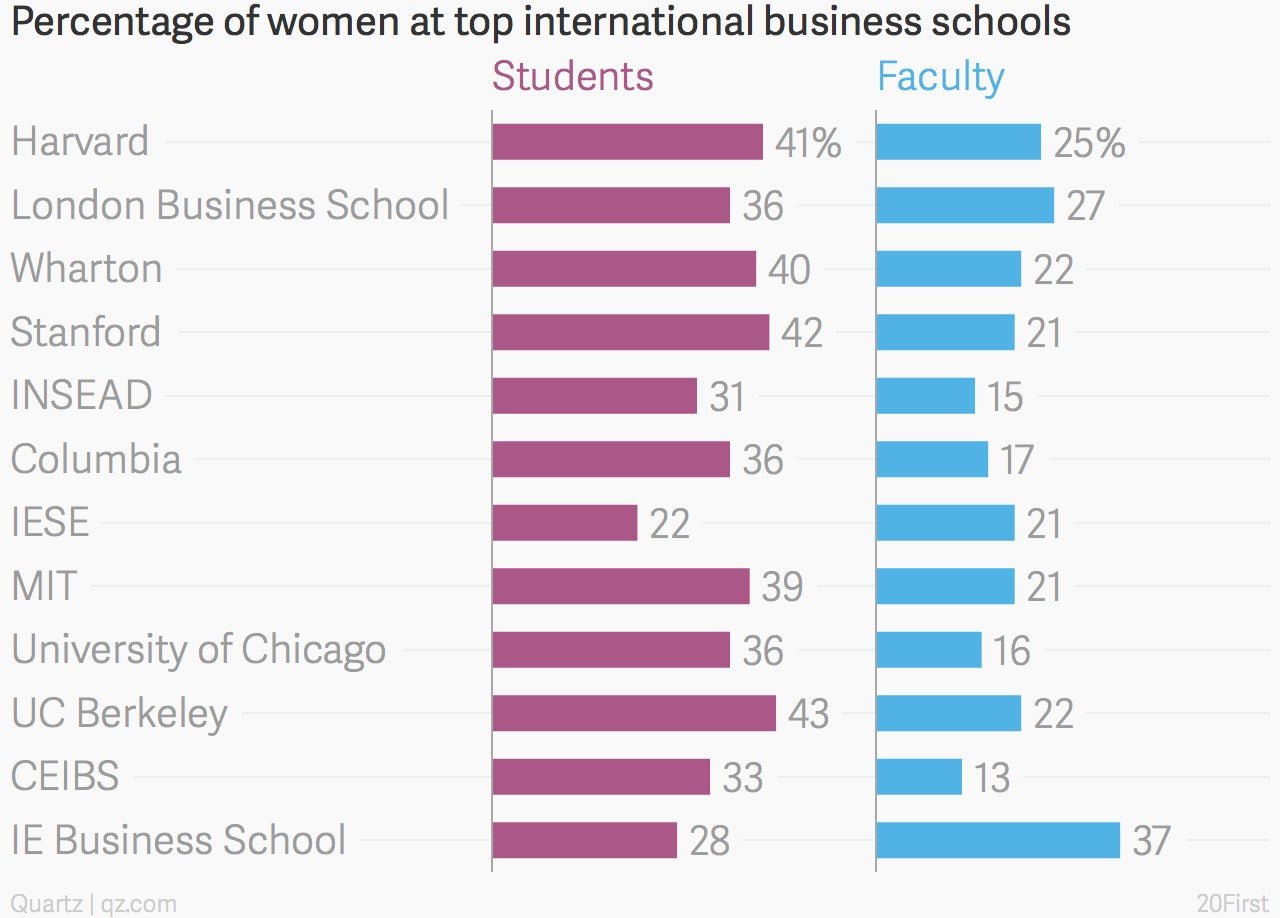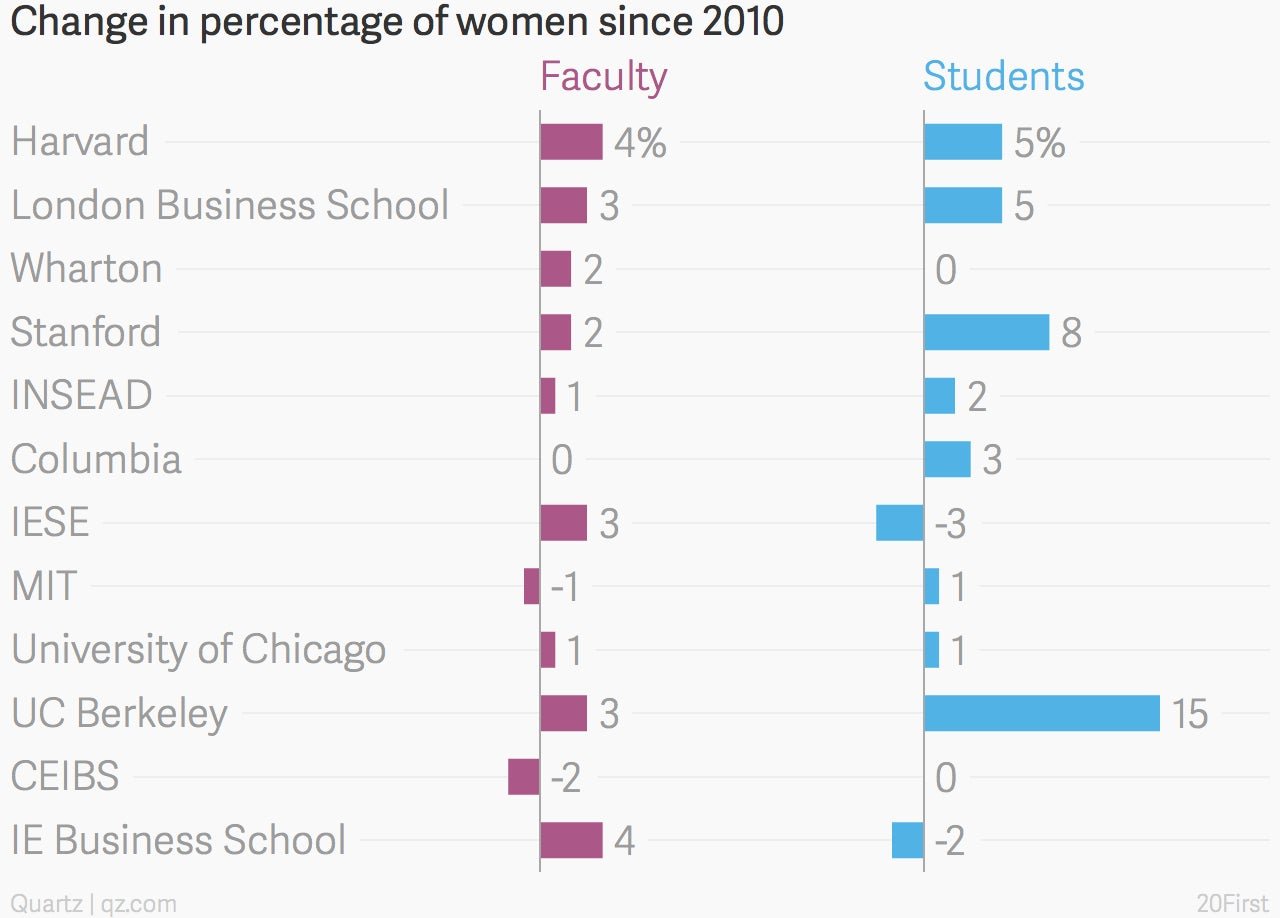The C-suite gender gap starts with business school
Women make up the majority of college graduates in the United States and in many other developed countries around the world. But they make up a minuscule fraction of chief executives, board members, and managers in general, particularly in the high-paying finance and technology industries.


Women make up the majority of college graduates in the United States and in many other developed countries around the world. But they make up a minuscule fraction of chief executives, board members, and managers in general, particularly in the high-paying finance and technology industries.
In recent years, efforts to address this disconnect have increasingly focused on ways to keep women leaders on the pipeline—to root out gender bias from decisions on promotions, to improve the reentry process for women returning from maternity leave, and so forth. But part of the problem can still be traced back to a major entryway into the pipeline itself.
According to a new report (pdf) by 20First, a gender diversity consultancy, women remain significantly underrepresented at business schools around the world, in terms of the student body (the numbers for executive MBA programs are even worse than for traditional programs), faculty (especially tenured faculty), and case study protagonists.
“Add all this up, and neither women nor men are getting much experience of gender balance at business schools,” the authors write.
Their analysis draws on data from the Financial Times’ global MBA rankings. Women account for a quarter or less of the faculty at most of the top dozen schools on the FT’s rankings. The proportion of female students rarely beats 40%:

There’s been some improvement over time, but at many schools it’s been slow and incremental:

Top schools tend to have the lowest proportion of women on their faculty, but the gender imbalance in the student body is largest at schools at the bottom of the FT’s rankings:

You certainly don’t need an MBA to make it to the C-Suite or a management position. But it’s one of the most common ways to get there, and among the fastest possible ways to boost salary—and women are disproportionately absent from the opportunity.